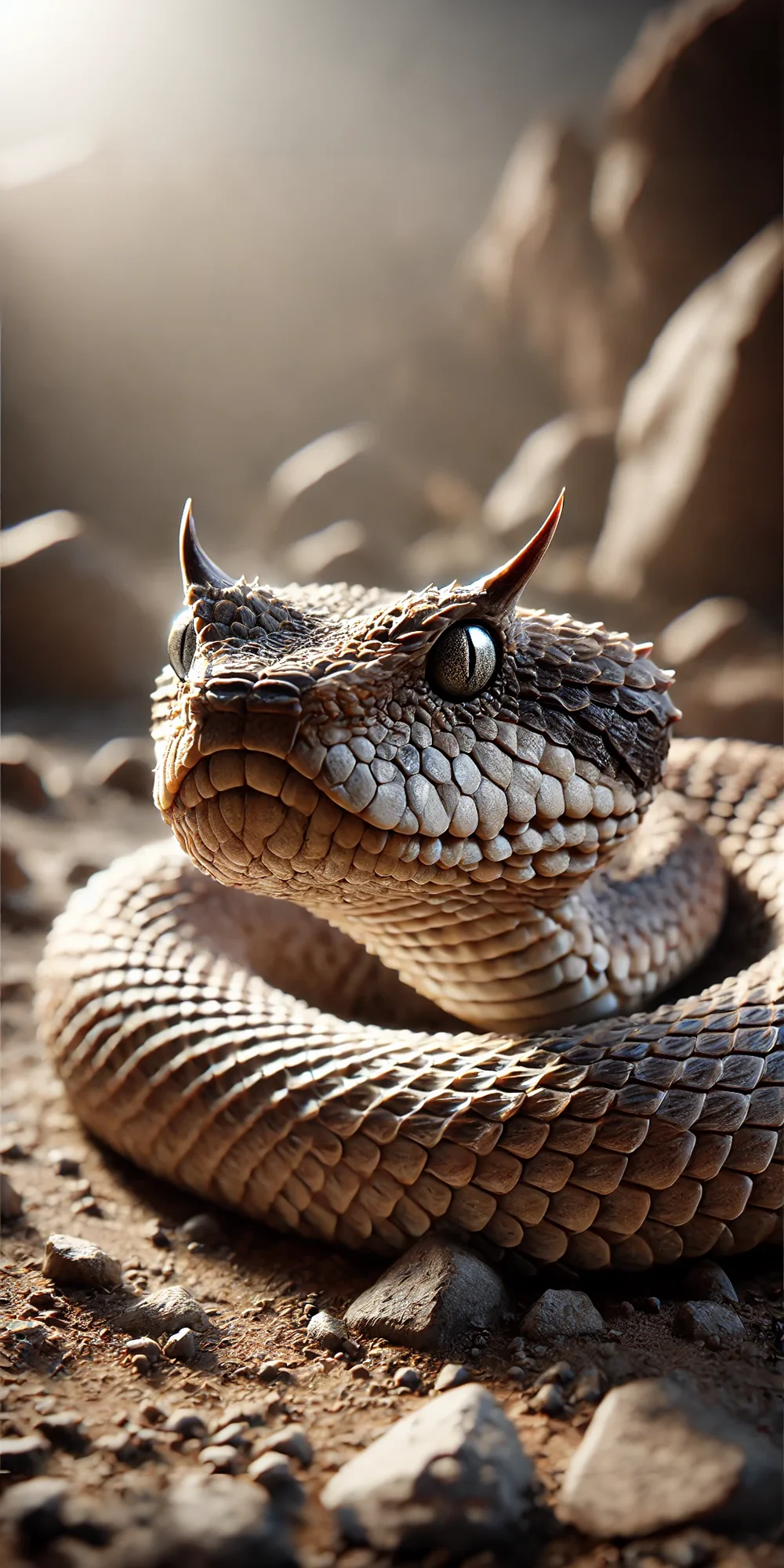The Horned Pit Viper
The Horned Pit Viper, also known as the Long-nosed Pit Viper, is a venomous snake known for its distinctive horns above the eyes which give it a unique appearance. They are typically green or brown in color with darker markings on their bodies. These snakes are primarily arboreal, meaning they spend most of their time in trees, waiting to ambush their prey.

| Horned Pit Viper | |
|---|---|
| Size | 2-4 feet (0.6-1.2 meters) |
| Weight | 1-3 pounds (0.45-1.36 kilograms) |
| Speed | 20 mph (32 km/h) |
| Key Strength | Venomous bite |
| Biggest Weakness | Vulnerable to larger predators |
| Scientific Name | Trimeresurus cornutus |
| Family | Viperidae |
| Habitat | Forests |
| Geography | Southeast Asia |
| Diet | Small mammals and birds |
| Lifespan | 12 years - 20 years |

The Horned Pit Viper
The Horned Pit Viper, also known as the Long-nosed Pit Viper, is a venomous snake known for its distinctive horns above the eyes which give it a unique appearance. They are typically green or brown in color with darker markings on their bodies. These snakes are primarily arboreal, meaning they spend most of their time in trees, waiting to ambush their prey.
Fun Fact: The Horned Pit Viper has heat-sensing pits located on their heads that help them detect warm-blooded prey, such as rodents, even in complete darkness.
| Horned Pit Viper | |
|---|---|
| Size | 2-4 feet (0.6-1.2 meters) |
| Weight | 1-3 pounds (0.45-1.36 kilograms) |
| Speed | 20 mph (32 km/h) |
| Key Strength | Venomous bite |
| Biggest Weakness | Vulnerable to larger predators |
| Scientific Name | Trimeresurus cornutus |
| Family | Viperidae |
| Habitat | Forests |
| Geography | Southeast Asia |
| Diet | Small mammals and birds |
| Lifespan | 12 years - 20 years |
Horned Pit Viper Matchups
We use AI to simulate matchups between the Horned Pit Viper and other animals. Our simulation considers size, strength, and natural predatory behaviors to determine the most likely outcome.
Horned Pit Viper: Diet, Predators, Aggression, and Defensive Behaviors
What do Horned Pit Vipers eat?
Horned Pit Vipers are carnivorous reptiles that predominantly feed on small mammals, birds, lizards, and amphibians. They are known to be ambush predators, lying in wait for their prey to come within striking distance before attacking.
Do Horned Pit Vipers have any predators?
Horned Pit Vipers have relatively few natural predators due to their venomous bite and cryptic coloration that helps them blend into their surroundings. However, larger predatory birds, mammals, and other snakes have been known to prey on them occasionally.
Are Horned Pit Vipers aggressive?
Horned Pit Vipers are generally considered to be shy and reclusive snakes, preferring to avoid confrontation with humans or other animals. However, they can become defensive and may strike if they feel threatened or cornered.
Do Horned Pit Vipers engage in combat with other animals?
Horned Pit Vipers are solitary animals and typically do not engage in combat with other animals, including members of their own species. They rely on their venomous bite as their primary means of defense and offense.
How do Horned Pit Vipers defend themselves?
Horned Pit Vipers rely on their cryptic coloration and defensive behaviors like hissing, coiling, and striking when threatened. Their venomous bite is their most potent defense mechanism, which they use to incapacitate or kill potential threats or prey.
What is the biggest weakness of Horned Pit Vipers in a fight?
Despite their potent venom and defensive capabilities, Horned Pit Vipers have a relatively slow strike speed compared to some other venomous snakes. This slower strike speed may leave them vulnerable to faster-moving predators in a fight, especially if their initial strike misses the target.
Fun Fact: Unlike some other snakes, the Horned Pit Viper gives live birth instead of laying eggs, with females typically giving birth to a small number of offspring at a time.
Fun Fact: Horned Pit Vipers have a hemotoxic venom that is potent and can cause serious harm to their prey or potential predators, making them a formidable predator in their natural habitat.










